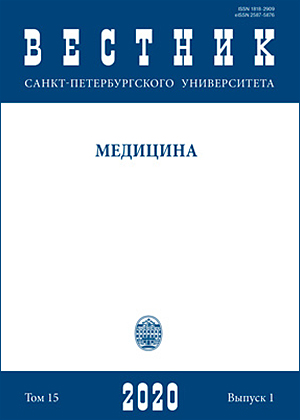Rehabilitation of patients with facial nerve injuries after neurosurgical treatment
DOI:
https://doi.org/10.21638/spbu11.2020.105Abstract
The facial nerve is most often, as compared with other cranial nerves, damaged due to surgical interventions. In the first place, as the cause of iatrogenic damage, is neurosurgical treatment for neoplasms of the ponto-cerebellar angle and temporal bone, brain injuries. The neuropathy of the facial nerve is the cause of neurological and cosmetic defects that have a serious traumatic effect on the patient. The psychological consequences of facial neuropathy are more important for the patient than physical damage. Paresis of mimic muscles cannot be hidden and often leads to social maladjustment, isolation and a marked reduction in the quality of life. Facial neuropathy, in most cases, is not a life-threatening condition, but it definitely changes the patient’s life. This article proposes an effective rehabilitation system, tested on 172 patients with facial nerve damage after neurosurgical treatment. The combined use of physiotherapy, massage, therapeutic gymnastics, including posture treatment with taping, during the early period of the disease, allows restoring nerve function and maintaining mimic muscles, as well as avoiding undesirable complications such as pathological synkinesis and corneal atrophy.
Keywords:
neurosurgical treatment, neuropathy of the facial nerve, paresis of the facial muscles, rehabilitation
Downloads
References
References
Downloads
Published
How to Cite
Issue
Section
License
Articles of "Vestnik of Saint Petersburg University. Medicine" are open access distributed under the terms of the License Agreement with Saint Petersburg State University, which permits to the authors unrestricted distribution and self-archiving free of charge.





